Arizona Garden in December
The Arizona garden in December is a beautiful place. The chilly morning weather makes the afternoon my favorite time to be in the garden. Fall planting in September and October yields harvests in the Arizona garden in December. Watch the weather reports carefully and be prepared to cover frost-sensitive plants if there is a freeze. The cool temperatures in December help cool-season plants thrive.
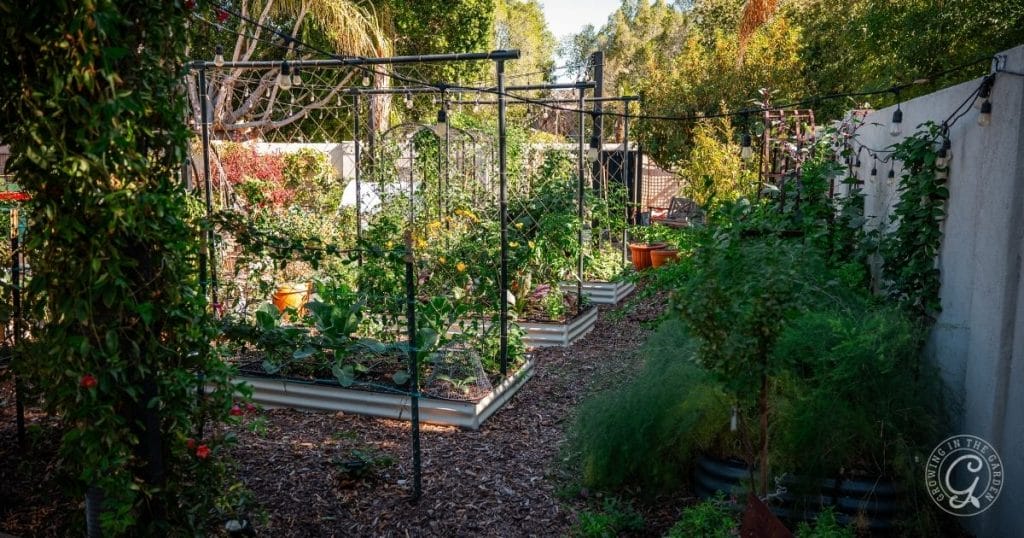
“The gardening season officially begins on January 1st, and ends on December 31.” – Marie Huston
Nowhere is this quote more true than in Arizona. While many parts of the country are dreaming of gardening and circling what they would like to plant in seed catalogs, in Arizona we are harvesting pounds of citrus and vegetables and planting seeds.
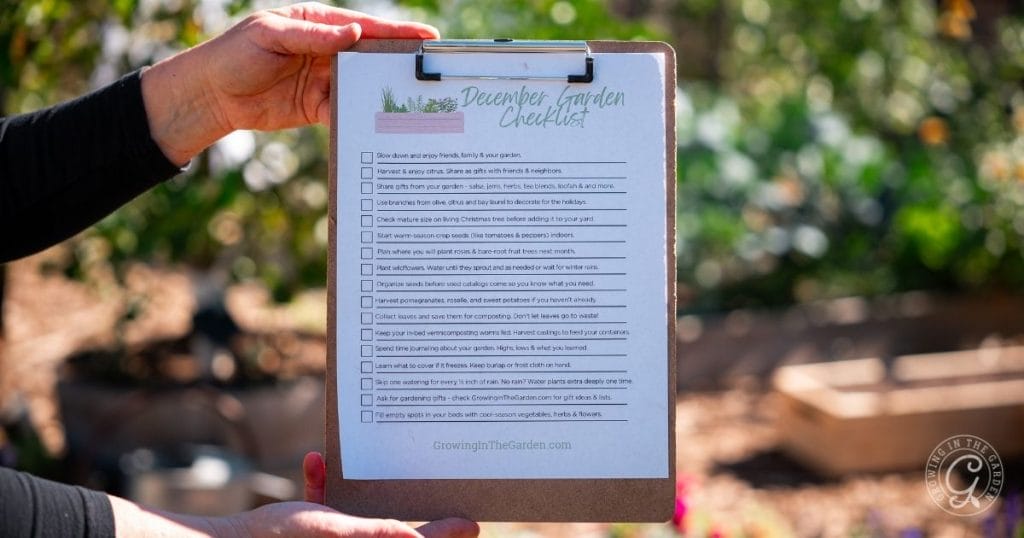
In this article, you’ll find the essential tasks to help your December vegetable, landscape, flower, and fruit garden be successful. I’ll also discuss common pests to watch out for and give guidelines for watering this month.
The low desert includes areas below 3,500 feet in elevation, such as the Phoenix and Tucson metro regions.
Click on the title to jump to that section and learn more about what to do during December:
December YouTube Video
Vegetable Gardening Tasks for December
December brings a slower pace to gardening in Arizona. As the darkest month of the year, the days are shorter, and what is growing does so more slowly. Mid-December through January is usually the coldest time, making it a quiet period in the garden. Hopefully, you’ve done most of your planting by now. This is a great time to shift your focus to harvesting and enjoy the fruits (and veggies!) of your labor.
If you would like to learn more about the principles of successful desert gardening, my guide, “Desert Gardening: How to Grow Vegetables in a Hot, Dry Climate,” may be helpful.
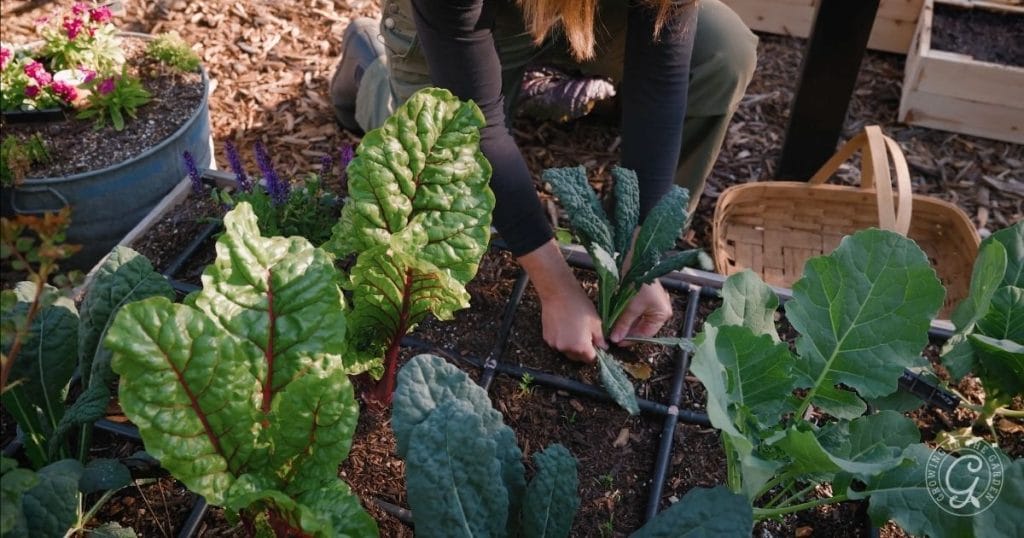
December Harvests
December is a wonderful time to enjoy the harvest from your garden. Many cool-season crops are perfect for “cut and come again” harvesting. Instead of taking the entire plant, you harvest the mature outer leaves and let the center leaves grow. This technique lets you enjoy continuous yields over weeks or even months. Throughout the season, you’ll have a steady supply of fresh lettuce, kale, spinach, and Swiss chard. Learn more about cut-and-come-again harvesting in this guide. If you are growing kale, my favorite way to use it is in this salad–the best kale salad you’ll ever make.
- Tomatoes planted in July – September are producing. The cooler temperatures mean they take longer to ripen. Once temperatures drop below around 55°F (12°C), the plant may not set new fruit, but fruit on the plant will continue to ripen.
- Swiss chard is a staple in my garden year-round, but the newly-planted tender Swiss chard in the December garden is especially delicious. Continue to harvest outer leaves throughout the winter. Most years, many of my Swiss chard plants will produce through the summer as well. I like to replant and begin with fresh plants in the fall.
- Garden-fresh peas are one of my family’s favorite garden treats. Pick peas often and young to encourage production. Provide a trellis for growing peas. For more information about different types of peas to try, read this article.
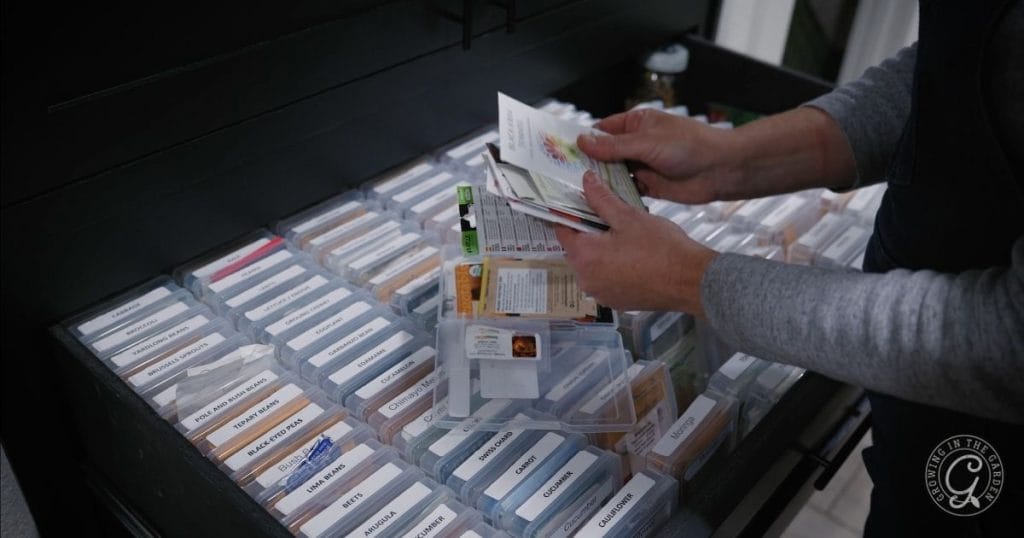
Vegetable Planting in December
Plant succession plantings of the Brassica family, which include cabbage, broccoli, Brussels sprouts, cauliflower, kohlrabi, and kale, ensure a continual harvest. Learn more about succession planting in this guide.
Start seeds indoors for tomatoes and peppers this month. They will be ready to plant by February or March. Read this post for more information about how to start seeds indoors. Here is a link to my favorite seed-starting supplies.
You can plant many other vegetables, herbs, and annual flowers in December. For specific details on what to plant in Arizona’s low desert during December, check out my planting guides or the blog post “What to Plant in December.”
To make your planning smoother, I’ve compiled all these planting lists into convenient perpetual calendars so you can see everything to plant each month and guides organized by crop. The calendars and guides have versions for vegetables, herbs & fruits, and another one for flowers. All of the guides and calendars are available in my shop. These resources are designed to help you garden with confidence here in the low desert of Arizona.

Vegetable Gardening Tasks in December in Arizona
If you’re growing potatoes, it may be time to cover them with an additional layer of straw or soil. Cover them with another thick layer when the leafy growth is 6”-12” (15-30 cm) high.
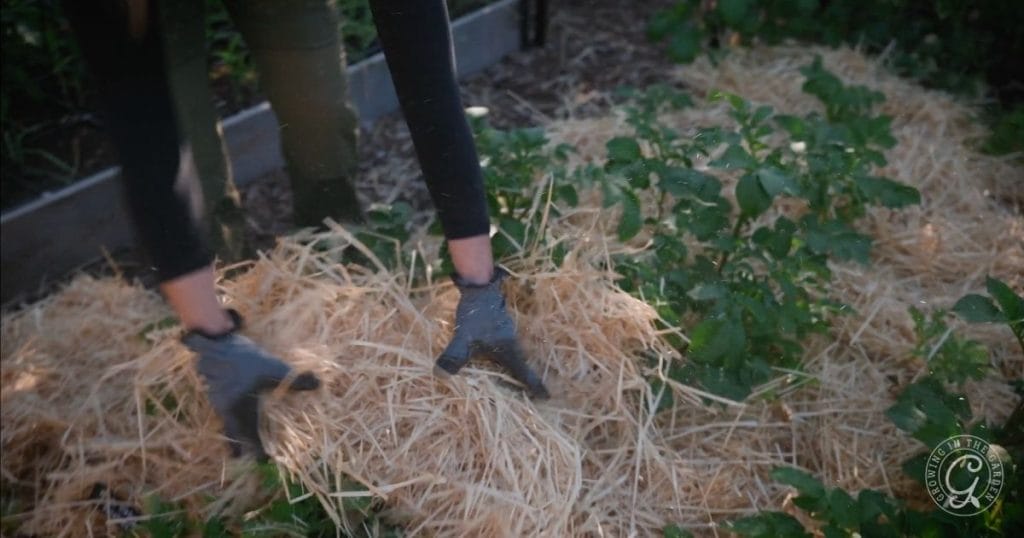
Feed your worms and harvest castings this month. To feed worms, take off the wood chips. Put a 1-2 inch layer of food down, and then place the food scraps back on top. If you pull back the wood chips and see that all the food and worms are gone, it might be a good time to harvest the castings. Learn more about in-bed vermicomposting in this guide.
Begin planning for February and March plantings: order seeds and decide which areas in your garden to plant in (it is best to rotate where you plant your crops each year).
December is a perfect time to reflect on your gardening journey by keeping a garden journal. This can be as simple as scrolling through the gardening photos on your phone and asking yourself a few questions: What were your successes? What lessons did you learn? What will you do again? And what will you avoid next time? Taking a moment to jot down these thoughts can help you celebrate your achievements and plan for an even better garden next year.
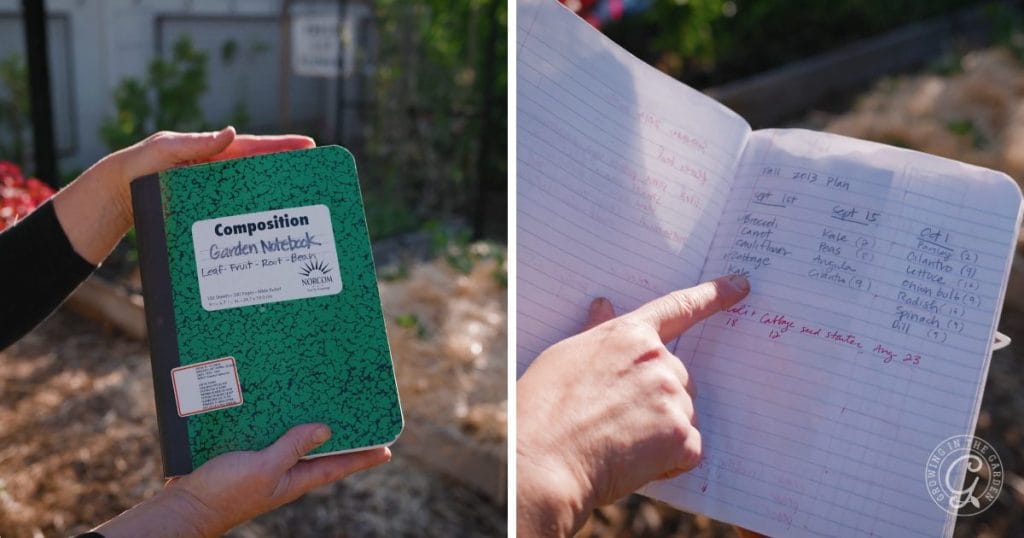
My December Garden Journals

Twice a month, I send my personal garden journal to members of “Growing in the Garden Academy.” From the first seedling to the last harvest, you can follow my gardening adventures in Arizona’s unique low desert. Access the past three years of garden journals and monthly classes as a member.
Pests & Wildlife to Watch Out For This Month
Aphids and cabbage worms are the most common pests this month. Monitor plants and look for beneficial insects to arrive. Learn how to get rid of cabbage worms in this guide.
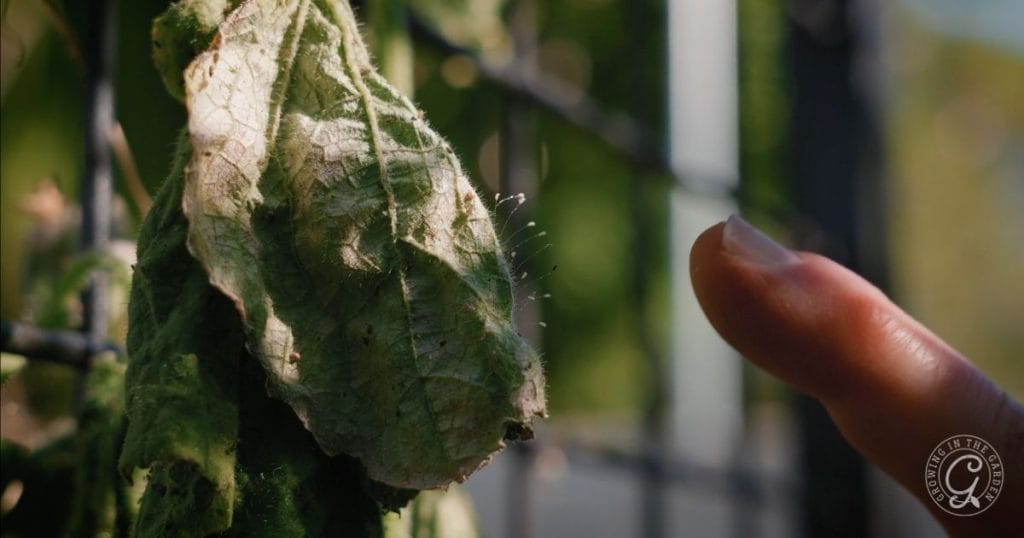
Container Gardening Tasks
Fill up your containers if you haven’t already. When it’s cool, crops will often grow quicker in containers because they heat up more. If you’re looking for spots to plant cool season flowers, containers are perfect!
Feed your containers this month. The harvested castings from your in-bed vermicomposting bins are perfect for this. If you don’t have castings, you can use this fertilizer.
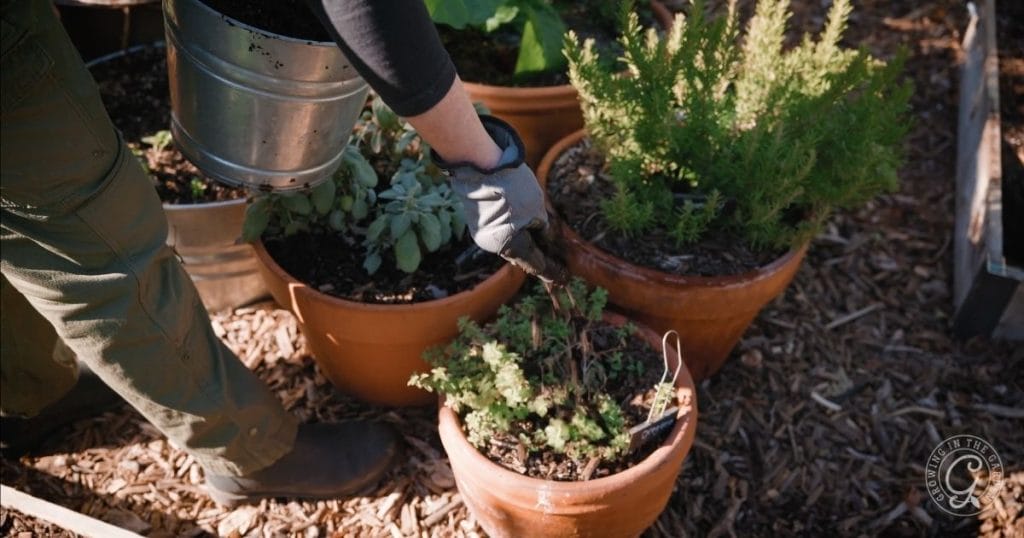
Flower Gardening Tasks in Arizona in December
- Flowers planted now will thrive until the heat of April or May. Get your favorites planted.
- Water wildflowers if there is no rain to keep them growing.
- Add trellis netting for tall stemmed cut flowers – the easiest way to support a large number of flowers instead of providing individual support for each one. Get more details about how to use and install trellis netting for cut flowers in this guide.
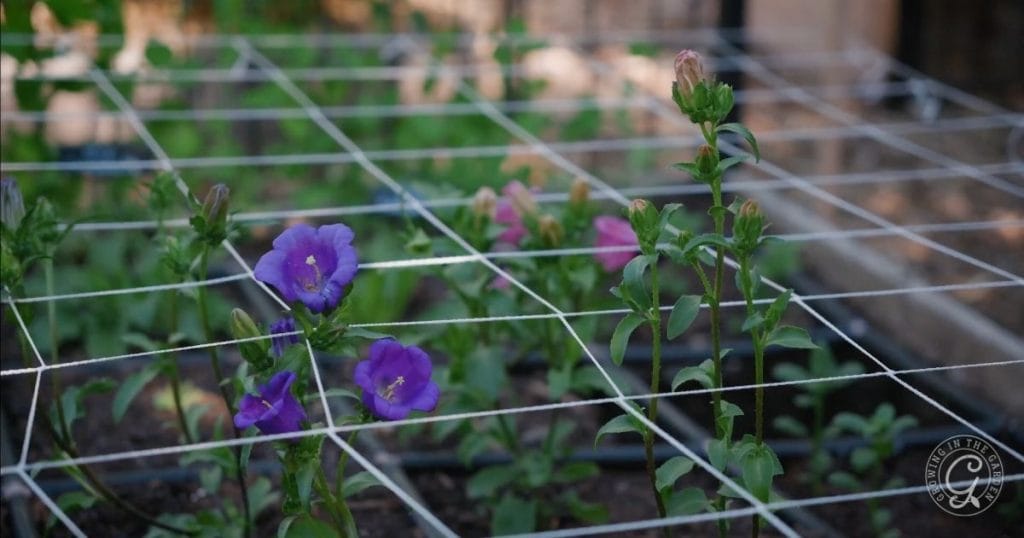
Caring for Roses During December
It is okay to lightly prune spent flowers and dead canes on your established roses in December. In January, you’ll give roses that have been in the ground for over a year a good prune.
Plant container-grown roses this month. I get my roses from Heirloom Roses. Use Code GARDENAZ20 for 20% off any rose order through December 31, 2025.
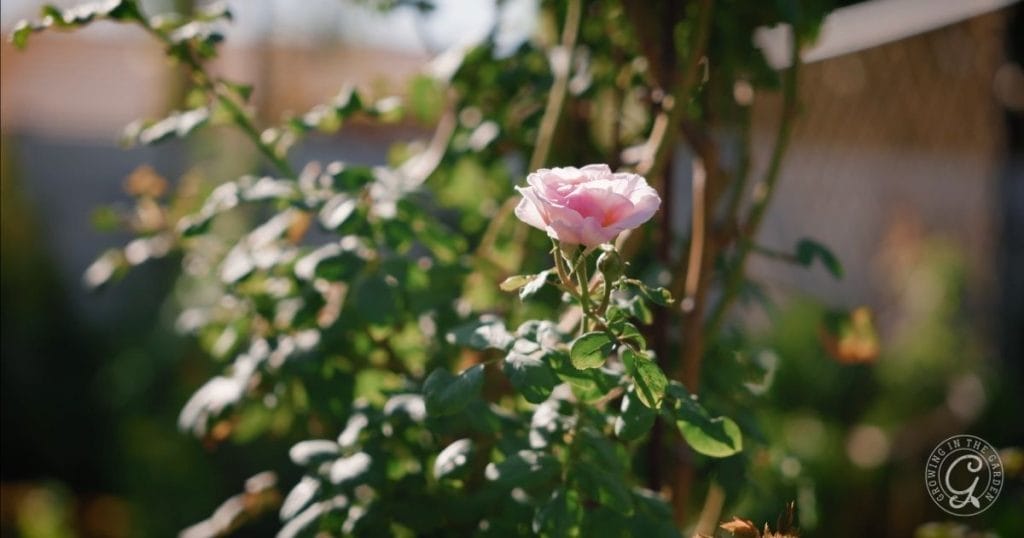
Herb Gardening
Harvest and share herbs from the garden this month.
- Parsley grows well in the cooler weather of December. If you use a lot of parsley, consider succession planting it (planting every 3 weeks). Read more about how to grow parsley here.
- Garlic chives are one of the easiest herbs to grow in Arizona. Harvest young stalks and use in eggs, marinades, and Asian dishes. Learn how to grow garlic chives in this guide.
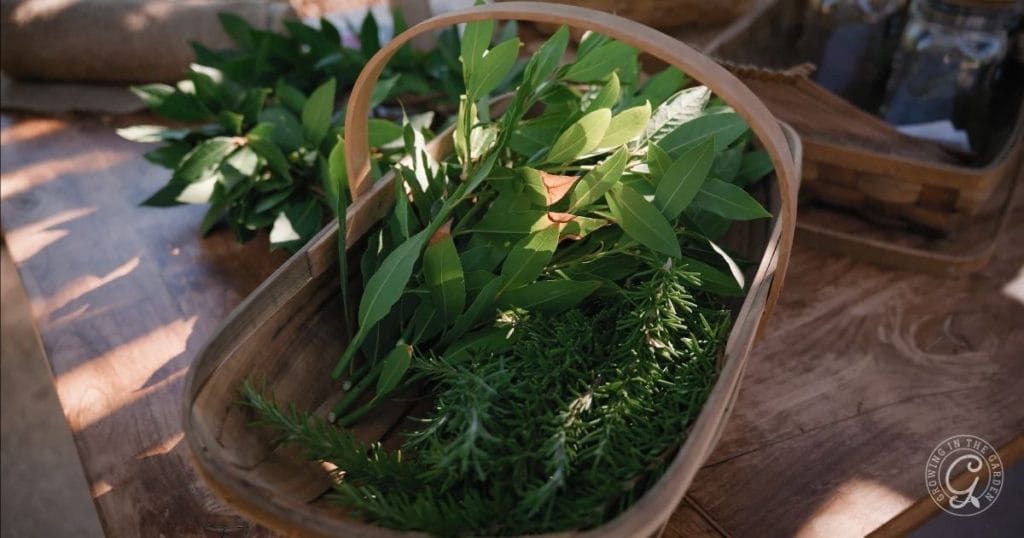
Looking for gifts for your favorite gardener?
Looking for the perfect gift for the gardener in your life—or a treat for yourself? My gardening gift ideas and blog posts are packed with holiday inspiration. From practical tools to delightful homemade surprises, there’s something for every green thumb.
- Top Garden Gifts: Gifts for Every Gardener
- Holiday Neighbor Gift: Wildflower Seed Packets
- Gifts That Will Make Any Gardener Happy

Fruit Trees and Citrus
Harvest and enjoy citrus in your Arizona garden in December. Cooler temperatures cause citrus fruits to change color, but the color is not always an indicator of sweetness. Fruit does not sweeten once picked. Check for ripeness and desired sweetness by sampling the fruit.
Cover young or container-grown citrus if we get a freeze. Learn more about protecting citrus during freezing temperatures in this guide.
- Do not prune citrus this month.
- Water citrus deeply once this month.
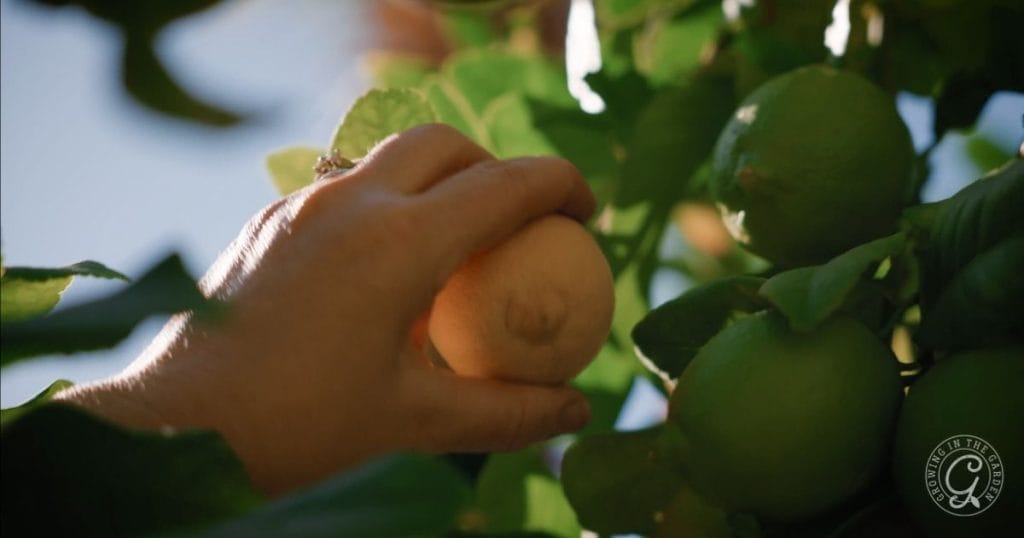
Deciduous fruit trees like peach, pear, and plum are losing their leaves. If all leaves do not fall, strip leaves to encourage dormancy. Harvest fruit and clean up around fruit trees. Fallen fruit and leaves are inviting for pests.
- Don’t prune until leaves have fallen.
- When the scaffold is visible, prune deciduous fruit trees through February. Make cuts carefully and do not remove more than 25 percent of the tree.
- December or January is a good time to use a dormant oil spray, such as horticultural oil on fruit trees to help prevent pests.
December in Arizona is a good time to plant fruit trees. Look for varieties that require less than 400 chill hours. Learn more in this fruit planting guide.
Landscape Plant Tasks During December
December in Arizona can be challenging to plant landscape plants. Cold soil, light freezes, and shorter days make it tough for many plants to get established. However, it’s okay to plant cold-hardy shrubs during this time. These resilient plants can handle the cooler conditions and will settle in nicely, ready to thrive when warmer weather returns.
- Plant cold-tolerant trees, bushes, and perennials if necessary, but protect new plants from freezing temperatures.
- Wait until February to plant frost-sensitive plants such as lantana and hibiscus.
- If you’re thinking about planting your living Christmas tree in the yard after the holidays, be sure to check its mature size first. Many Christmas tree varieties can grow anywhere from 30 to over 100 feet tall! If that seems too big for your space, consider choosing a living shrub like rosemary instead. Also, remember to keep your living tree indoors for no more than two weeks to avoid damaging the plant. This way, you’ll help ensure it stays healthy and thrives once it’s planted outside.
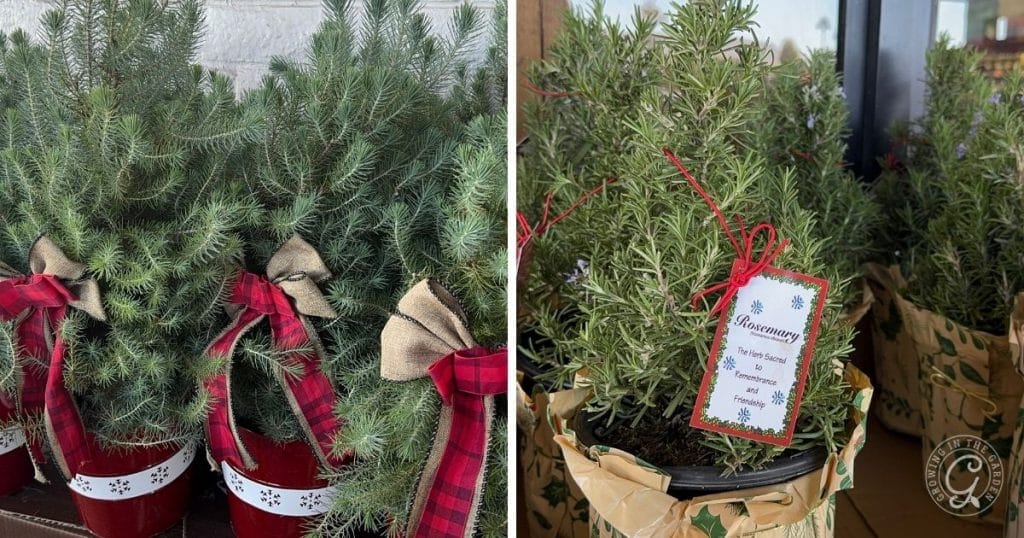
Save all the leaves that are falling from Ash, Vitex, Elm, and other deciduous trees this month. If you planted a winter lawn, the grass clippings combined with fallen leaves are perfect for the compost pile. If you decide not to compost, bag leaves and let them decompose; they will be ready to spread on plants as leaf mulch by spring. Learn how to compost in this article.
Pruning:
- Do not prune frost-tender plants this month.
- Prune dead branches out of cold-hardy trees and shrubs. December is a good time to prune dormant woody trees and shrubs. See benefits below.
Benefits of pruning woody plants in cool weather:
- Pruning in warmer months stimulates new growth; when the plant is dormant, growth is not stimulated by pruning.
- Pests that can invade pruning cuts are dormant in cooler weather.
- Once leaves have dropped, the tree’s overall shape (scaffold) is easier to see. Spotting crossed or damaged branches is easier.
- Wounds made by pruning in winter will heal quickly in the spring.
Watering Your Garden and Landscape During December
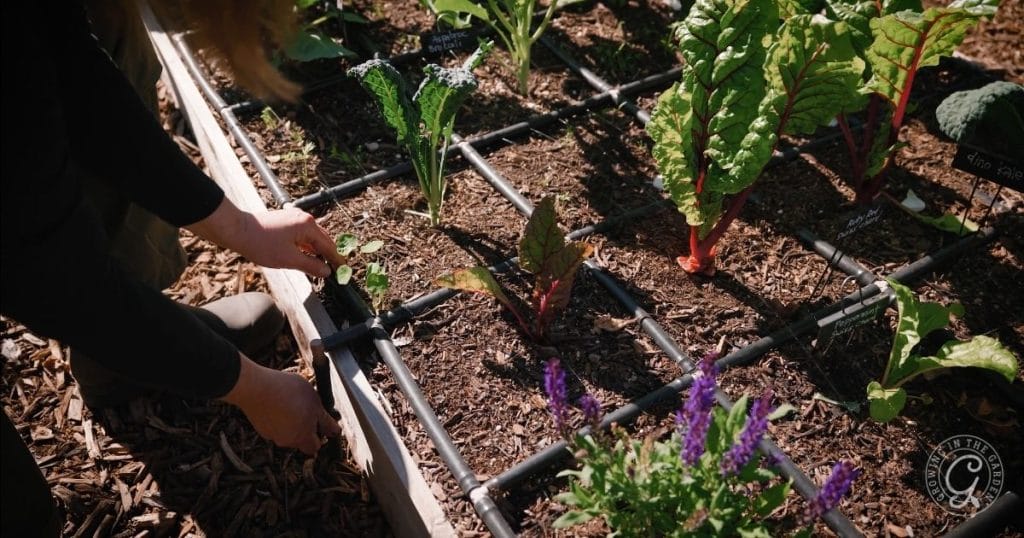
If there are winter rains – skip one watering for every ½ inch of rain. If there aren’t winter rains, plan on one deep irrigation if there hasn’t been rain for 60 days.
Plants will need less water than they did a month ago. Many annual plants are not growing actively and have minimal water needs. Be careful not to over-water this month. Plants in bloom will need more water. The best way to see if plants need water is to check the soil. I use my fingers or a moisture meter.
- Containers: If one inch (3.5 cm) below the surface is dry, it’s time to water. Plants in containers will need less water this month.
- Garden beds: If 2-3 inches (5-7 cm) below the surface is dry, it’s time to water. I often water my garden about once a week during December.
- Water trees and shrubs deeply no more than once every 14-28 days, less often if we get heavy rain. Wateruseitwisely.com is a helpful resource for landscape watering guidelines.
Frost Protection in the Arizona Garden in December
Protect from freezing temperatures (below 32°F / 0°C):
- Have burlap or frost cloth on hand to protect newly-planted citrus and other frost-sensitive plants from frost.
- Plants in containers are more susceptible to freezing temperatures than those in the ground. Read this article for more information about protecting your garden during a freeze.
- This guide shows you which plants to cover if we get a freeze.
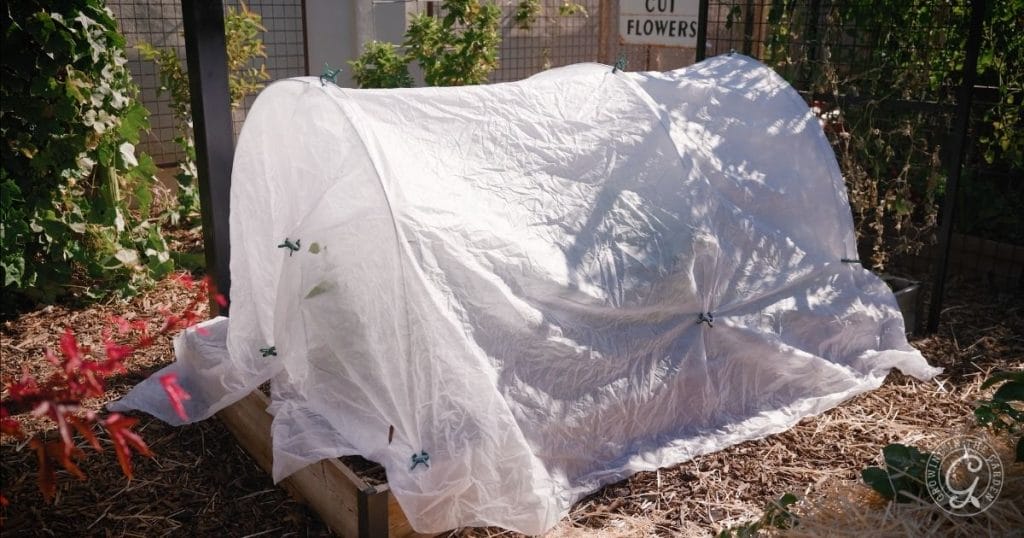
Get planting dates for your favorite crops with these visual planting guides for vegetables, herbs, fruits, flowers & vines.

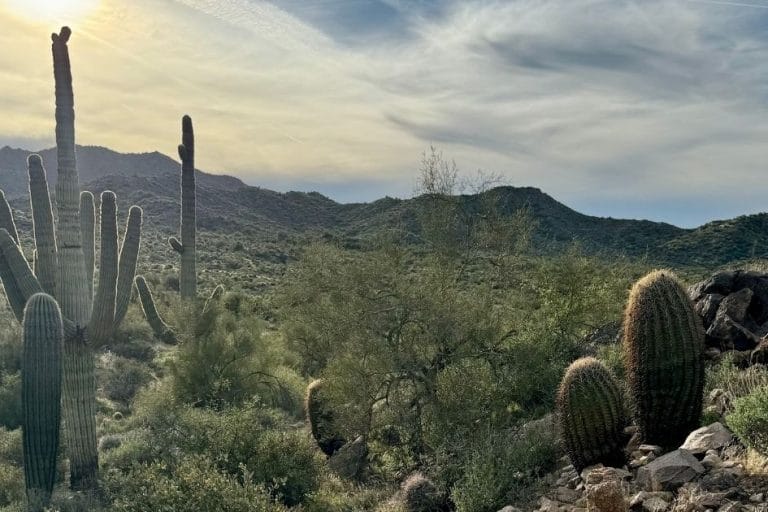
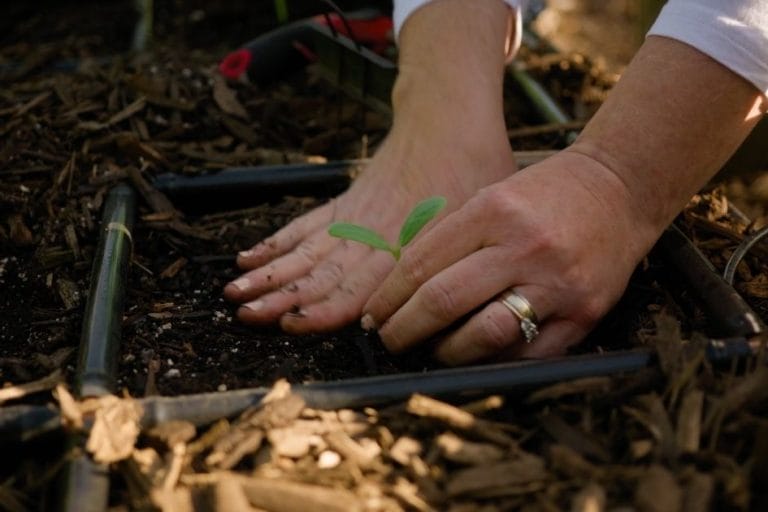


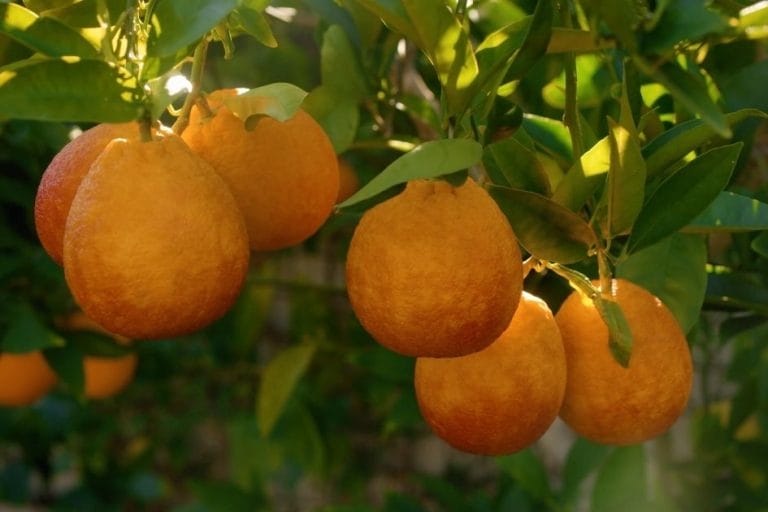
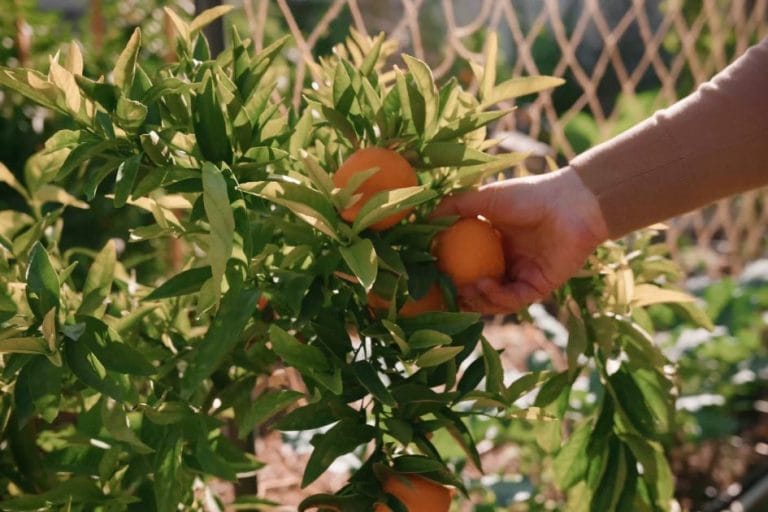
I have tiny nonflying black bugs in the soil. They are eating all my seedlings. I’ve tried oils and an organic sulfur spray. Nothing seems to get rid of them. Help!
Sorry to hear that. Are they fungus gnats? If so, let the top inch or two of soil dry out. Continuously moist soil keeps the numbers high. You could also set out citrus traps to catch them. Cut citrus in half and put it face down in the soil. The bugs may congregate there and then can be scooped out and disposed of. This article may offer more suggestions. https://growinginthegarden.com/organic-pest-control-that-really-works/
No mention of nicotiana, what information do you have on it?
I haven’t grown it, and don’t know much about it, sorry.
I’d love to see some pictures of your indoor seed starting setup with a more in-depth article about how to keep them healthy indoors until we are able to plant outdoors in spring. Any additional links for things like seed heat mats and recommended lighting would also be great. Thanks for sharing!
You can get most of that information from this article: https://growinginthegarden.com/how-to-start-seeds-indoors-10-steps-for-success/ Within that article there are also links to more in-depth articles about many of the steps (like potting up and hardening off). Hope this helps!
I’m wondering what kind of seed boxes I see advertising the labels. I have NO organizing method except putting heat loving in one big zip bag and cool loving in another, flowers the same way as well as herbs which are all kept in a clear bin. HELP! thx
Here’s a link to the ones I use: https://amzn.to/3CWWIKf This article might be helpful for you: https://growinginthegarden.com/seed-storage-organization-tips/ Your method isn’t a bad one, sounds simple and effective.